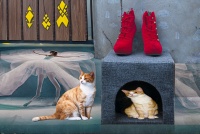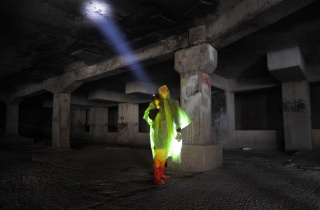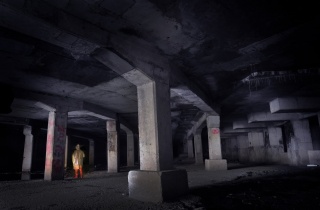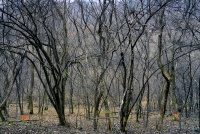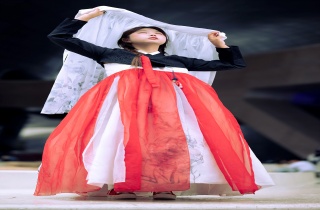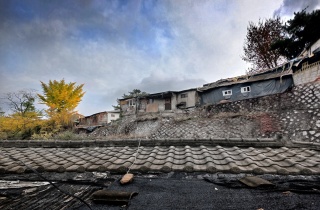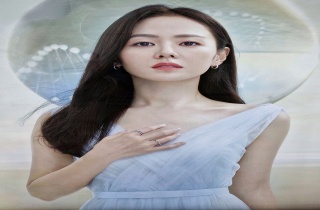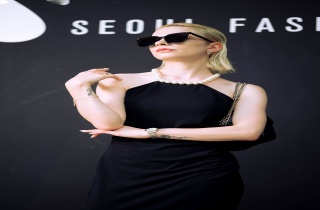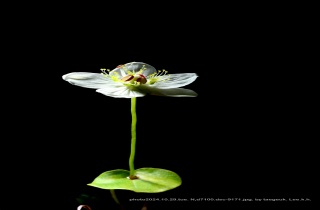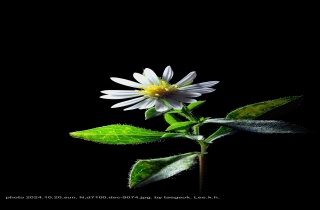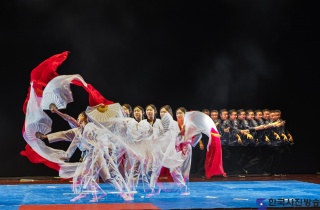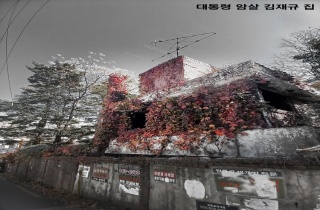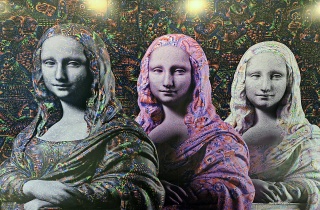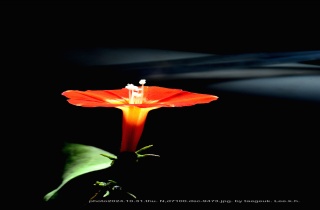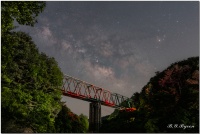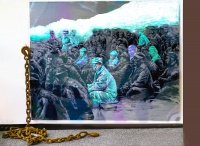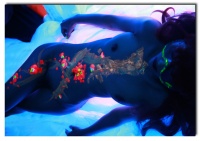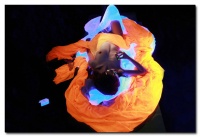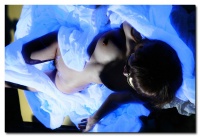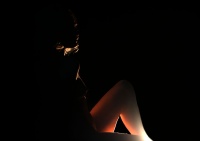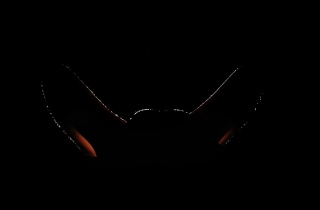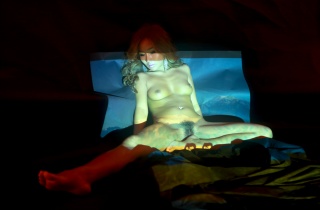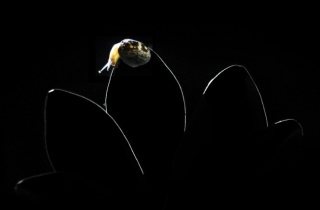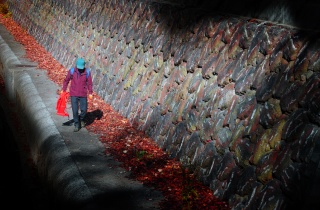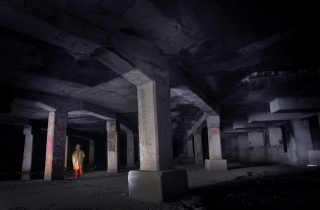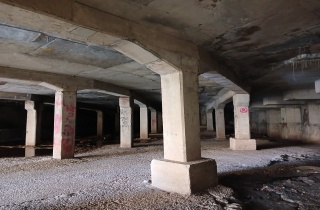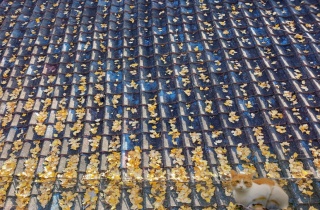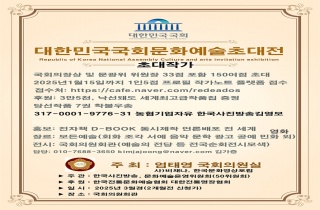| 제20회 염효란 화백 초대전 ‘RELATION'
중진화가 염효란 화백이 인사아트프라자에서 7월12일부터 7월18일까지 초대전을 연다.
염효란 작가의 이번 출품작 ‘RELATION'은 요즈음 AI 와 NFT 등 디지털 세계의 영향으로 화려한 컬러와 심상적인 형상위에 그 만의 독창적이고 주관적인 직관이 관통한 추상성을 전시해 작품에서 풍기는 아우라가 강렬하여 감상자로 하여금 몽환속을 헤매게 하는 마력을 발산하고 있다.
-김가중 기자 관전평-
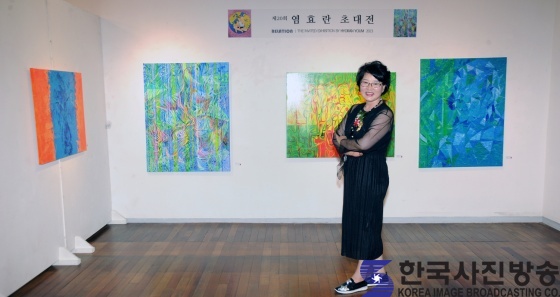


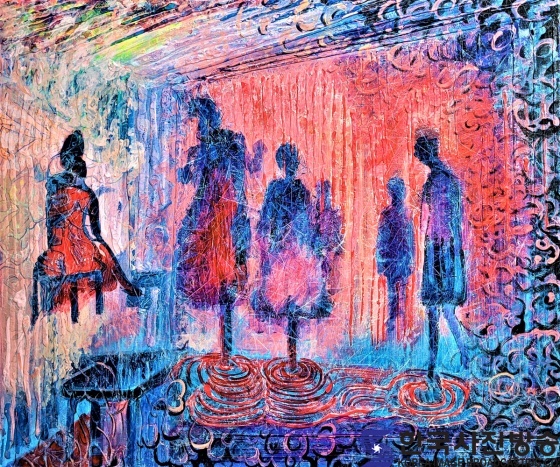
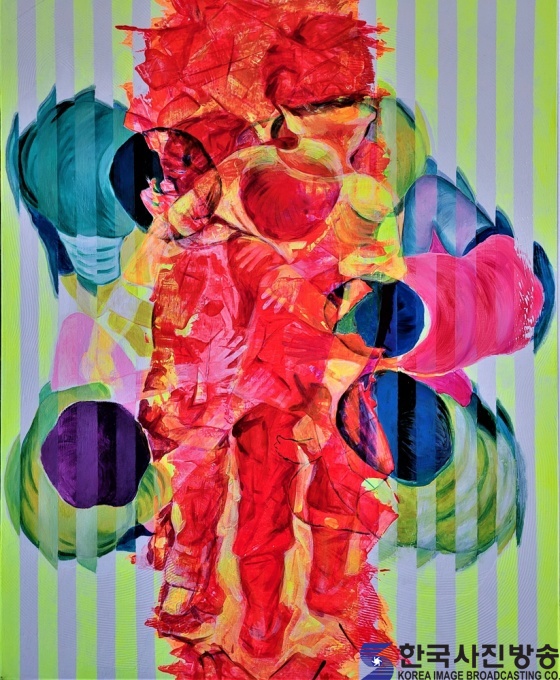
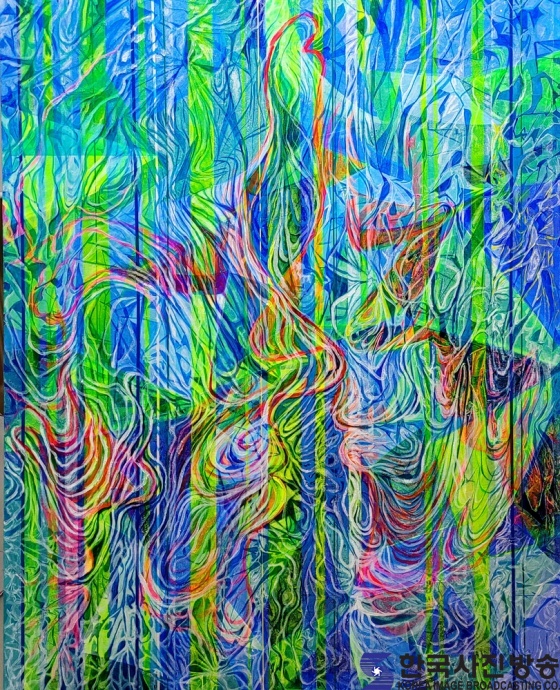
염 효 란 ( Hyoran Youm, 廉 孝 蘭 )
학력
‧ 단국대학교 일반대학원 (조형예술학과 서양화) 박사수료
‧ 홍익대학교 미술대학원 (회화전공) 석사졸업
전시
‧ 개인전: 20회
‧ 초대전 및 단체전: 200여회
수상
‧ 2022. 5. 9. : 2022 한류문화공헌대상 (대상)
‧ 2022. 4. 6. : (사)국제현대예술협회 (한국예총회장상)
‧ 2022. 3. 16. : 국제문화예술 (주한 볼리비아대사상)
‧ 2021. 12. 1. : 대한민국 현대조형미술대전 (한국예총회장상)
‧ 2020. 11. 18. : 대한민국 현대조형미술대전 (한국예총회장상)
‧ 2020. 7. 20. : 제39회 대한민국 미술대전 비구상부문 (특선)
‧ 2020. 7. 15. : 대한민국 현대여성미술대전 (문화체육관광부장관상)
‧ 2019. 5. 29. : 제11회 대한민국 남북통일 세계환경예술대전 (국가보훈처장상)
‧ 2019. 5. 16. : 제9회 국토해양환경국제미술대전 (국회부의장상)
‧ 2018. 5. 23. : 제8회 국토해양환경국제미술대전 (서울시장상)
‧ 2018. 6. 2. : 제10회 대한민국 남북통일 세계환경예술대전 (경기도의회 의장상)
‧ 2018. 1. 8. : 제35회 대한민국 신미술대전 (한국미술협회이사장상)
‧ 2013. 12. 24. : 제31회 대한민국 신미술대전 (한국예총회장상)
심사위원
. 2023년 국토해양환경국제미술대전 (심사위원장)
‧ 2022년 대한민국 현대조형미술대전 (심사위원)
‧ 2021년 대한민국 현대여성미술대전 (심사위원장)
‧ 2018년 대한민국 현대여성미술대전 (심사위원장)
‧ 제33회 대한민국 미술대전 (서양화, 수채화 심사위원)
‧ 제40회 전국공모 대한민국 신미술대전 (심사위원)
‧ 제12회 국토해양환경국제미술대전 (심사위원)
‧ 제29회 전국공모 성산미술대전 (심사위원)
‧ 제20회 세계평화미술대전 (심사위원)
‧ 대한민국 남북통일 세계환경예술대전 (심사위원)
‧ 신상미술대전 (심사위원)
현재
‧ 대한민국 현대여성미술대전 전시기획 감사조직위원장
‧ 국토해양환경국제미술협회 여성회장
‧ 대한민국 현대여성미술협회 부회장
. 안성미술협회 서양화1분과 위원장
‧ 대한민국 미술협회 회원
‧ 에꼴 회원
. 대한민국 현대조형미술대전 운영위원
강의
‧ 2010~2017 안성시립도서관
‧ 2012~2017 예원예술대학교 문화예술대학원 전문가 과정
‧ 2013~2021 한림성심대학교 평생교육원
‧ 2016~2019 중앙대학교 평생교육원
연락처
‧ 이메일 : yhr0924 @ naver.com
**************
작가노트
본인의 작품은 세계와 끊임없이 관계를 맺고 있는 인간의 존재로서 타자와의 접속을 통해 이루어지는 관계(relation)를 시각적 이미지로 표현한 것이다.
이러한 관계의 생성은 철학자 질 들뢰즈의 사건과 의미 생성이라는 과정을 통해 설명되어질 수 있다. 사건이란 하나의 존재가 다른 존재와 만나게 되는 접속 과정을 말하며, 이러한 사건을 통해 새로운 의미가 생성되게 되는 것이다. 이렇게 새롭게 탄생된 의미에 의해 새로운 관계가 형성되는 것이다.
모든 사물들은 오직 하나의 고정된 불변의 성질을 가진 존재가 아니라, 어떤 대상과 언제 어떻게 접속하는 것에 따라 성질이 달라진다.
수많은 사람들과 끊임없이 접속하며 살아가는 우리들은 수많은 사건을 통해 각각 다른 의미의 여러 존재들이 생겨나게 된다. 들뢰즈는 이를 시뮬라크르라 하였으며, 각기 의미 있는 존재로 파악하였다.
들뢰즈가 말하는 생성은 아무 것도 없는 무에서 유가 생겨나는 것이 아니라 무엇인가로 되어가는 것으로 파악해야 하며, 무엇으로 되어가는 상황 속에서 인간이 존재한다는 것이다.
그러므로 다른 것들과의 접속을 통해 새로운 의미가 끊임없이 생성 및 변이를 하는 것이 인간이고, 이렇게 끝없이 변화하는 모습이 세상의 모든 것들이 보여 지는 본질적인 모습이다.
본인의 과거를 돌아보면 과거의 모습과 현재의 모습 사이에 많은 차이가 있음을 발견하게 된다. 따라서 개인 한 사람의 모습을 이미지화 한다는 것은 한 시점의 모습만으로는 적절하게 그 사람의 모습을 표현하기 어렵다. 그러므로 사람의 본질적인 모습을 보다 적절히 시각적으로 이미지화하기 위해서는 여러 시간대의 모습을 이미지화해야 한다. 따라서 본인 작품에 세로선을 등장 시킨 것은 세로선에 의해 구분된 공간들이 각기 다른 시간대 모습을 상징하기 위한 것이다.
또한 작품에 오토그래픽 기법을 사용한 것은 관계를 형성하는 사건의 발생이 우연성에 기반하고 있음을 나타기 위한 방법으로 오토그래픽 기법을 사용하였다. 즉 사람의 삶과 관계 형성이 우연히 발생한 사건들로 인해 새로운 상황으로 발전되어 가는 것임을 오토그래픽 기법을 사용하여 상징적으로 이미지화한 것이다.
인물의 표현에 있어서 구체적인 표현보다 보다 파편적이고 해체된 모습으로 이미지화한 것은 사건을 통한 새로운 의미 생성을 좀 더 상징적으로 나타내기 위함이다. 왜냐 하면 인간 본연의 모습은 고정불변한 한 모습이 아니라 시간에 따라, 사건에 따라 끊임없이 변하기 때문에 하나의 고정된 이미지 하나만으로 인간의 내면을 포함한 모든 모습을 표현한다는 것이 불가능하기 때문이다.
들뢰즈 철학에 기반하여 인간 본연의 모습을 탐구하고 이를 이미지화하는 과정을 통해, 본인은 우리 인간은 끊임없이 변화하는 창조와 생성의 존재라는 사실을 알게 되었으며, 우리는 언제나 보다 나은 미래를 향해 끊임없이 사건과 의미 생성을 통해 새로운 관계를 만들고 노력해야만 하는 존재임을 깊이 인식하게 되었다.
끝으로 이러한 창조적 삶의 지혜를 얻을 수 있게 많은 가르침을 주신 교수님들을 비롯해 동료, 지인, 가족께 깊은 감사의 말씀을 전한다.
"Author's Note“
My work is a visual representation of relationships created through connections with others, which humans are constantly engaged in with the world. This process of relationship creation can be explained through philosopher Gilles Deleuze's concept of event and the generation of meaning. An event refers to the process of a being encountering another being, and through this event, new meaning is created. It is through this newly born meaning that new relationships are formed.
All things are not merely beings with one fixed and immutable nature but rather, their nature changes depending on how, when, and with what they connect with.
As we live our lives constantly connecting with countless people, we create many different existences with different meanings through various events. Deleuze calls this simulacra and understands them as existing meaningfully in their own right.
Deleuze's concept of creation should not be understood as something emerging from pure nothingness, but rather as a process of becoming something within a particular context. In this process, humans exist as a part of the ongoing generation and transformation of meanings through connections with other things. Therefore, human beings are constantly creating and mutating through these connections, and this endless transformation is the essential nature that is manifested in all things in the world.
When looking back on one's past, one realizes that there is a significant difference between one's past and present selves. Therefore, visualizing a person's essence in an image is difficult with only one point in time. To more appropriately visualize a person's essential self, it is necessary to depict multiple time periods. Therefore, the use of vertical lines in the artwork symbolizes different time periods separated by those lines.
Furthermore, the use of auto-graphic techniques in the artwork represents the fact that the formation of relationships is based on chance events. In other words, the use of auto-graphic techniques symbolically visualizes how a person's life and relationships develop into new situations as a result of chance events.
The fragmented and deconstructed representation of a person in visual art is intended to create new meaning through symbolic representation, rather than through concrete depiction. This is because the natural state of a human being is not a fixed and unchanging form, but rather one that is constantly evolving over time and through experiences. Therefore, it is impossible to express all aspects of a person, including their inner self, through a single fixed image.
Based on the philosophy of Deleuze, through the process of exploring the essence of human nature and visualizing it, I have come to realize that we as human beings are constantly changing beings of creation and generation. We must continuously strive towards a better future by creating new relationships through events and meanings. In conclusion, I would like to express my deep gratitude to my professors, colleagues, friends, and family, who have provided me with many teachings to obtain such wisdom of creative living.
************
나누고 연결하는 회화-염효란의 근작들
염효란의 근작들에서 우리가 만나는 형상들에 관해서 먼저 이야기해보기로 하자. 이 화가가 최근 제작한 작품들 속에는 어떤 얼굴들, 어떤 표정들, 어떤 자세들이 존재한다. 여기서 우리는 어떤 사건들을 목격한다. 즉 여기 모여있는 사람들은 무언가를 함께 하고 있다. 하지만 그 무엇, 즉 이 사람들이 누구인지, 그리고 여기서 구체적으로 어떤 일이 발생하고 있는지 파악하기는 대단히 어렵다. 이른바 도상학적 접근으로 이 작품의 의미를 헤아리는 일은 사실상 불가능하다. 그 얼굴들, 표정들, 자세들 대부분이 지워져-뭉개져 있기 때문이다. 무엇보다 이 형상들은 깨져 있고 조각나 있으며 그 깨진 조각들은 서로 어긋나 있다.
그런데 깨져서 어긋나 있는 것은 형상들만이 아니다. 형상-배경의 고전적인 구분에 따라 우리가 ‘배경’으로 간주할 수 있는 부분들도 깨져서 어긋나 있다. <Relations>(2022)에서 분절된 어머니와 아이(들)의 형상 뒤편에는 지구의 형상이 등장하는데 그 지구 역시 깨져서 어긋나 있고 그 뒤편의 분홍색 배경에는 갈라짐과 깨짐을 암시하는 무수한 선들이 보인다. 어떤 작품들-<Relation>(2023)에서는 마치 큐비즘 회화에서처럼 깨진 형상의 파편들과 배경의 단편들이 어수선하게 뒤섞여 있어서 어디까지가 형상이고 또 어디까지가 배경인지 가늠할 수 없을 정도다.
흥미로운 것은 그럼에도 불구하고 염효란의 근작들이 전적으로 무질서하다거나 산만하게 보이지 않는다는 점이다. 확실히 이 작품들 각각은 모종의 통일성을 간직하고 있다. 전체적으로 깨져서 어긋나 있지만 여기에는 최소한의 일관성 혹은 질서를 제공하는 주관적인 연상의 사슬 같은 것이 존재하는 것 같다. 대상에 대한 양가적인 감정을 생각해볼 수 있다. 우선 대상에 대한 부정적 감정을 말해야 한다. 공격적인 태도, 곧 형상들을 깨트리고 조각내는 태도는 대상에 대한 부정적인 감정을 드러낸다. 하지만 염효란의 작품들에서 그 대상들은 어떤 경우에도 완전히 파괴, 해체되지 않는다. 지워지고 뭉겨져 있을지언정 사람들 혹은 사건들의 형상은 자기 모습을 아무튼 여전히 유지한다. 어떤 의미에서 염효란의 작품에서 형상들은 끝내 간직된다고 말할 수 있다. 이렇게 대상을 부정하면서 동시에 긍정하는 태도, 또는 대상을 긍정하면서 동시에 부정하는 태도는 삶(의 기억들)에 대한 매우 인간적인 이해와 맞닿아 있는 것 같다. 인간은 미워하면서 사랑할 수밖에 없는 존재들, 내 영혼을 갉아먹고 파괴하면서 동시에 내 삶을 지탱해주는 존재들과 더불어 살아간다. 긍정적인 기억의 이면에는 항상 부정적인 기억들이, 부정적인 기억의 이면에는 항상 긍정적인 기억들이 존재한다.
부정과 긍정이 교차하는 염효란의 회화는 부정의 대상이면서 동시에 긍정의 대상인 타자들에 적응하면서 어떻게든 어울려 살아가는 인간의 삶을 상기한다. 염효란의 근작들 다수는 이른바 오토그래픽 기법을 사용한 작품들이다. 이 화가는 캔버스에 칠한 물감 위에 비닐을 덮고 구김을 주어 발생하는 불규칙 패턴들을 회화의 형상과 배경들과 결합하는 문제에 몰두하고 있다. 이렇게 우발적인 사건들을 회화에 아우르는 일은 전혀 예상하지 못했고, 원하지 않았던 사건들, 내 마음대로 되지 않는 일들과 맞닥뜨려 수습하고, 적응하며 안정을 유지하려고 애쓰는 인간의 삶을 떠올리게 한다.
그런데 염효란의 근작들을 지금까지와는 다르게 해석할 수도 있다. 그러려면 내가 아직 이야기하지 않은 요소들을 주목해야 한다. 앞에서 나는 염효란의 근작들에서 “최소한의 일관성 혹은 질서를 제공”하는 “모종의 통일성”을 말했지만 이때의 통일성은 통상적인 의미의 통일성-유기적인 전체성, 일관된 전체성-과는 썩 달라 보인다. 그것은 매우 느슨하고 가변적인 통일성이다. 염효란의 작품에는 동일성보다는 차이를 두드러지게 만드는 단절, 간격, 공백과 간헐성의 요인들이 존재한다. 이 작품들은 여러 세계들(공간들)로 구성되어 있다. 깨진 조각들, 단편들은 같은 세계의 다른 조각들과는 그럭저럭 들어맞지만 다른 세계의 다른 조각들과는 들어맞지 않는다. 그 세계들을 나누고 가르는, 관(管)처럼 생긴 가로, 세로 선들이 존재한다. 염효란의 작업노트에는 이 선들에 대한 언급이 빈번히 등장한다. “반복된 선들은 관계를 통해서 바라본 또 다른 독립된 외부세계를 의미한다”거나 “분절선을 이어줌으로써 서로 연결되고 소통이 가능하게 되는 것”이라거나 “연결선들은 삶의 과정에서 외부세계와의 수많은 접속을 통해 생겨난 삶의 흔적”이라는 발언들이 그것이다. “막대형으로 분절된 공간”이라는 흥미로운 표현에 주목할 수도 있다. 이러한 발언들은 질 들뢰즈가 마르셀 프루스트의 소설을 다루면서 언급한 ‘횡단선’을 떠올리게 한다. 그는 “하나의 세계에서 다른 세계로 건너뛰게 해주는” 횡단선이 “다자(le multiple)의 매우 독특한 통일성을 확립하고 전체로 환원할 수 없는 이 (모든) 파편들을 합병하지 않은 채로 (그 각각을) 긍정한다”고 주장했다. 들뢰즈를 참조해 우리는 염효란의 작품들에서 횡단선들이 “파편들이 떨어져 나가는 것을 막는 만큼이나 파편들이 하나의 전체를 형성하지 못하게 한다”고 말할 수 있다. 프루스트를 따라 이러한 접근을 “산만하고 불규칙한 가필(加筆)”이라고 칭하면 어떨까? 산만하고 불규칙한 가필은 서로 이웃해 있는 것들에 간격을 삽입한다. 그 간격을 통해 “나는 최근의 사건들로부터 나를 분리할” 수 있다고 프루스트는 주장했다. 산만하고 불규칙한 가필은 또한 “서로 떨어져 있는 사물들을 이웃하게” 한다. “기억을 통해 과거와 현재 두 순간은 그 사이에 놓여있는 긴 거리가 존재하지 않는 듯이 곧바로 이어진다”는 것이다. 염효란에 따르면 “각각의 칸들은 시간적 단락과 연결을 의미”한다.
이상의 검토에 따르면 염효란의 횡단선들은 망각(잃어버린 시간)과 기억(되찾은 시간) 사이에서 진동한다. “세계를 넘나들며 살아가는” 존재들에 관한 염효란의 작업노트를 참조할 수 있다. 막힌 부분들을 끊임없이 옮겨 다니며 관통하는 횡단선을 그리는 화가는 통일적인 주체에 매달릴 이유가 없다(같은 이유로 염효란을 통일적인 주체를 지속, 유지하기 위해 애쓰는 화가로 보았던 나의 첫 번째 해석은 틀렸다고는 말할 수 없어도 충분히 만족스럽지 않다). 이 화가의 과제는 공간들, 블록들을 종합하여 통일된 이미지를 제시하는 것이 아니라 그 공간들, 블록들 안에서 매 순간 그에 대응하는 해석의 주체를 선택하는 것, 곧 “자아들의 모든 가능태들” 가운데서 자신을 “살아나가게 하는” 어떤 자아에 잠시나마 멈춰서서 그 자아를 누리고 전개하는 것일 게다.
홍지석(Hong Jisuk, 미술비평)
번역문
"Conversational Artworks of Hyoran youm that Divide and Connect"
Let's talk about the figures that we encounter in Hyoran youm's recent works.
Among the works created by this artist, there exist various faces, expressions, and postures. Here, we witness certain events, meaning that the people gathered here are doing something together. However, it is extremely difficult to grasp who these people are, and specifically what is happening here. It is practically impossible to decipher the meaning of this artwork through a phenomenological approach. This is because most of these figures' faces, expressions, and postures are erased and distorted. Above all, these shapes are fragmented and the broken pieces do not fit together.
However, it's not just the figures that are fragmented and disjointed. According to the classical distinction between figure and background, even parts that we can consider as "background" are also fragmented and disjointed. In <Relations> (2022), behind the segmented figures of a mother and child(ren), there is an image of the Earth, which is also fragmented and disjointed, and the pink background behind it is filled with numerous lines that suggest division and fragmentation. In some works, such as <Relation> (2023), fragmented pieces of figures and fragments of the background are mixed together in a disorderly manner, making it difficult to determine where the figure ends and the background begins, like in cubist paintings.
What's interesting is that despite this, Hyoran Youm's works don't appear completely chaotic or scattered. Each of these works seems to maintain some kind of unity. Although it's overall fragmented and disjointed, there seems to be a subjective chain of associations that provides at least minimal consistency or order. One can consider ambivalent emotions towards the subject. First of all, negative emotions towards the subject must be mentioned. The aggressive attitude of breaking and fragmenting the figures reveals a negative emotion towards the subject.
However, in Hyoran Youm's works, the subjects are never completely destroyed or dismantled, regardless of how they may be erased or conglomerated. The forms of people or events maintain their appearances in some way or another. In a sense, it can be said that the shapes in Hyoran Yeom's works are ultimately preserved. This attitude of negation and affirmation towards the subject seems to be closely related to a very human understanding of life (and its memories). Humans coexist with beings that they love while also hating them, as well as with beings that devour and destroy their souls while also supporting their lives. Behind positive memories, there are always negative memories, and behind negative memories, there are always positive memories.
Hyoran Youm's paintings, which depict a mixture of negativity and positivity, remind us of the human life in which we adapt to others who are both the targets of negativity and positivity and try to live together with them. Many of Hyo-ran Youm's works utilize the so-called autographic technique, in which she covers the canvas with vinyl and creates irregular patterns by crumpling it, combining them with the form and background of the painting. Incorporating accidental events into her paintings was something she never expected or intended, but it brings to mind the human life in which we encounter unexpected and unwanted events, try to cope with them, adapt, and strive to maintain stability.
However, it is possible to interpret Hyoran Youm's recent works differently from previous ones. To do so, we need to pay attention to some elements that I have not yet mentioned. While I previously referred to the "unity" or "consistency" that provides "some kind of coherence" in Youm's works, this unity appears to be quite different from the usual sense of organic wholeness or consistent wholeness. It is a very loose and variable unity. Youm's works contain factors of fragmentation, gaps, blanks, and intermittence that emphasize differences rather than similarities. These works are composed of several worlds (spaces). Broken pieces and fragments fit reasonably well with other pieces from the same world, but they do not fit with pieces from different worlds. There are horizontal and vertical lines resembling pipes that divide and distinguish those worlds.
In Hyoran Yeom's working notes, there are frequent mentions of these lines. She says things like "repeated lines represent another independent external world seen through relationships" or "connecting segmented lines enables communication and connection" or "connecting lines are traces of life that have emerged through countless connections with the outside world." It is interesting to note the phrase "space segmented into bar shapes." These statements bring to mind the "transversal lines" mentioned by Gilles Deleuze when he discussed Marcel Proust's novel. He argued that transversal lines were "crossing lines that allow us to leap from one world to another," establishing a very unique unity of the multiple and affirming each fragment without merging them into a whole.
Referring to Gilles Deleuze, we can say that in Hyoran Youm's works, the horizontal lines "prevent the fragments from falling out as much as they prevent the fragments from forming a whole." Following Proust, we could call this approach "restless and irregular augmentation." Restless and irregular augmentation inserts gaps between neighboring elements, through which, according to Proust, "I can separate myself from recent events." Restless and irregular augmentation also "brings together things that are far apart." "Through memory, the past and present moments are immediately connected as if there were no long distance between them." According to Hyoran Youm, "each cell signifies a temporal paragraph and connection.“
Based on the above review, Hyoran youm's horizontal lines oscillate between forgetting (lost time) and remembering (recovered time). One can refer to Hyoran youm's working notes on beings who "live through the world." A painter who draws penetrating horizontal lines, constantly moving through blocked areas, has no reason to cling to a unified subject (for the same reason, my initial interpretation of Hyoran youm as a painter striving to maintain a unified subject is not necessarily wrong but not satisfying enough). The task of this painter is not to present a unified image by combining spaces and blocks, but rather to choose the subject of interpretation that corresponds to each moment within those spaces and blocks, briefly stopping at a certain self among "all possible states of selves" and enjoying and developing that self.
Hong Jisuk (Art Critic)
|

